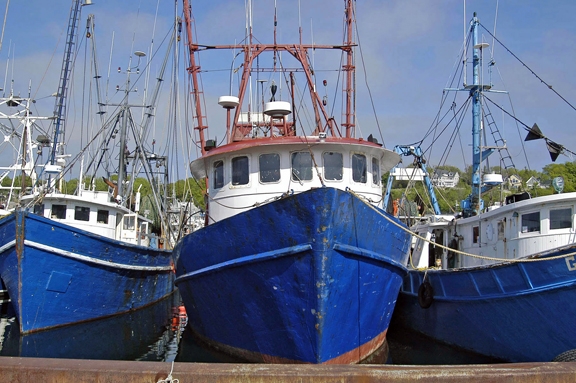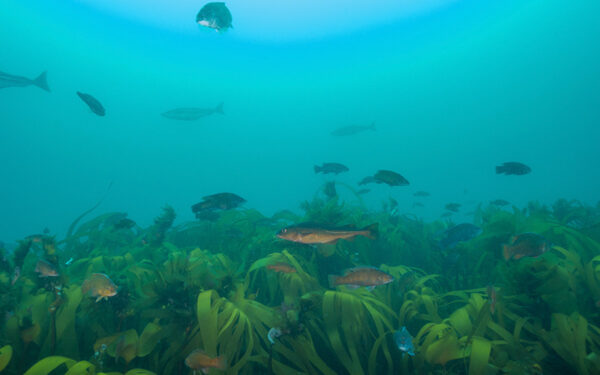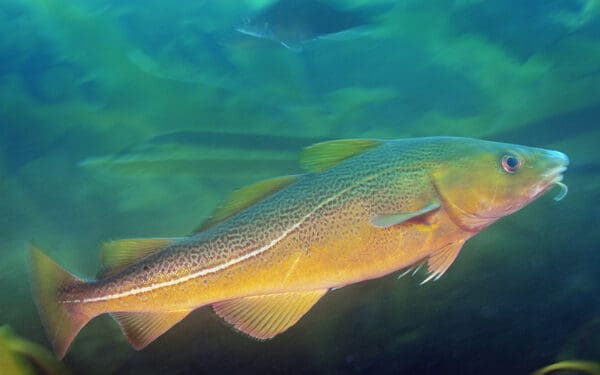
May’s arrival means that summer is finally close. In New England, there is no better time to enjoy a fresh, local seafood dinner than on a warm summer night. For many of us, that means serving up New England staples like haddock, cod, or flounder. These species aren’t only dinner staples, however. They also form the cornerstone of New England’s local fishing economy – and the commercial season for catching them officially opened on May 1.
Another Challenging Year Ahead
Unfortunately, it seems inescapable that these species and the fishing communities that depend on them will face another tough season. In fact, our fishing families – and the stocks they depend on, particularly Atlantic cod – may see hard times for the foreseeable future if the status quo remains intact.
Scientists tell us that cod populations are at historic lows – only 3-4 percent of a healthy, sustainable population. But some fishermen dispute the science, saying that they see plenty of fish when they’re out on the water.
It’s created a vicious cycle – the agencies that regulate commercial fishing set strict catch limits because data from surveys and on-the-boat observers show that cod populations have reached a dire state. Fishermen insist the science is wrong. But then fishermen don’t want observers on their boats to ensure data accuracy! There’s much at stake for all sides. For this cycle to end, and for there to be any real improvement in groundfish populations, we need:
- Accurate data about fish populations that everyone can trust
- Robust, objective on-boat monitoring to ensure that catch data is correct
- Regulations that are based on this data
Without accurate data, the situation we presently find ourselves in regarding Atlantic cod will be inescapable. Only with 100 percent accountability in the fishery can we eliminate the risks associated with the existing monitoring program and reduce uncertainty in stock assessments.
Moving Toward Trust
To end this failing cycle of mistrust, here are the actions CLF is taking:
We support science-based catch limits: Strict catch limits are still in place for many of the groundfish stocks, per new rules implemented last year and in effect until 2018. Certain stocks in the groundfish fishery have experienced relentless overfishing for decades, leading to population collapse. This became evident for the Gulf of Maine Atlantic cod stock in the summer of 2014. That’s when federal stock assessments shockingly revealed that the population had plummeted to 3 to 4 percent of its target sustainable levels. At that time, NOAA, which oversees the nation’s commercial fisheries, took emergency action, essentially closing down the cod fishery. CLF supported NOAA’s quick, but difficult decision to protect the cod stock.
Then, this year the Massachusetts Division of Marine Fisheries released the results of its own Atlantic cod survey. The survey, conducted in coordination with local groundfish fishermen and UMass Dartmouth SMAST (School for Marine Science and Technology) scientists, confirmed the results of the federal assessment: the Gulf of Maine cod population has experienced an 80 percent decrease in the last ten years and the number of juvenile and adult cod is significantly lower than needed to rebound.
Some within the industry still refuse to acknowledge the actual state of cod. This year and in the coming years, however, CLF will work to ensure that the best available science is used in the fishery management process in order to produce healthy and sustainable fish populations.
We will be at each meeting of the New England Fishery Management Council – the regional agency tasked with implementing federal fishing laws – to provide public comment. And we will support the Council when it makes good, science-based decisions and hold them accountable when they don’t.
We’re working to improve monitoring: CLF is currently participating in the development of Amendment 23 to the Northeast Multispecies Fishery Management Plan, which aims to improve the reliability and accountability of the New England groundfish monitoring program. This means designing a program such that the amount of fish caught and the amount thrown back into the ocean are accurately accounted for to ensure that catch limits are not exceeded and that stock assessments are based on the best available information.
Most importantly, this isn’t a singular issue; the standards that guide our federal fisheries law are grounded in accurate data. Without accurate data, it becomes nearly impossible to prevent overfishing and minimize bycatch.
Perhaps if we are able to reach 100 percent monitoring and as close to 100 percent accurate data possible, we will all be able to agree on the state of our fisheries and work to rebuild them together. In the meantime, CLF will continue to advocate for fishery management decisions based on sound science that serve to protect our fishery resources and the families that depend on them.
As summer arrives and we enjoy fresh, local seafood, let’s keep in mind how our seafood makes its way to our plates. Our New England economy depends on maintaining healthy oceans and healthy fish populations.



